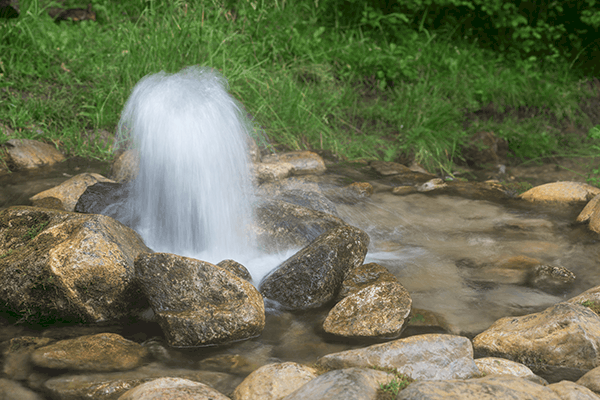Lakes and rivers contain only a small fraction of the world’s freshwater. Glaciers and permanent snow hold more than two-thirds. Groundwater, including soil moisture, swamp water, permafrost, and aquifers, contains an additional 30%.1Shiklomanov, I. (1993). World fresh water resources. In Gleick, P.H. (Eds.). Water in Crisis: A Guide to the World’s Fresh Water Resources. Oxford University Press. The ground holds more than 100 times more water than all the world’s rivers and lakes. In all, very little of the world’s water is easily accessible surface freshwater.
In terms of groundwater, the unsaturated zone refers to water in the soil above the water table. This zone contains relatively less water by volume. Water is more abundant in the deeper saturated zone. The water table separates the saturated and the unsaturated zone. As groundwater sources are depleted, the water table and the saturated zone drop, requiring deeper wells and more energy to pump water to the surface.

Underground formations that contain or transmit groundwater are referred to as aquifers. An aquifer that is currently used as a drinking water source is considered an underground sources of drinking water (USDW), and is protected in the United States by the Safe Drinking Water Act (SDWA) of 1974, with amendments added in 1986 and 1996. Under the SDWA, the Environmental Protection Agency (EPA) sets the standards for drinking water quality and monitors states, local authorities, and water suppliers who have been designated to enforce those standards. The EPA receives its authority for the Underground Injection Control Program and for several other programs and measures related to oil and gas operations and other sustainable energy systems activity (e.g., geothermal wells, carbon storage) from this set of laws.

Surface water and groundwater are interconnected. A portion of surface runoff from rain or snowmelt or perched streams infiltrates into the ground, thus, recharging aquifers. Groundwater reaches the surface naturally under its own pressure into stream beds and springs or through artesian wells.
Images: “Artesian Well” by Artenex via Shutterstock.com; “Graphic” by Top Energy Training; “Artesian Well” by Artenex/Shutterstock.com


